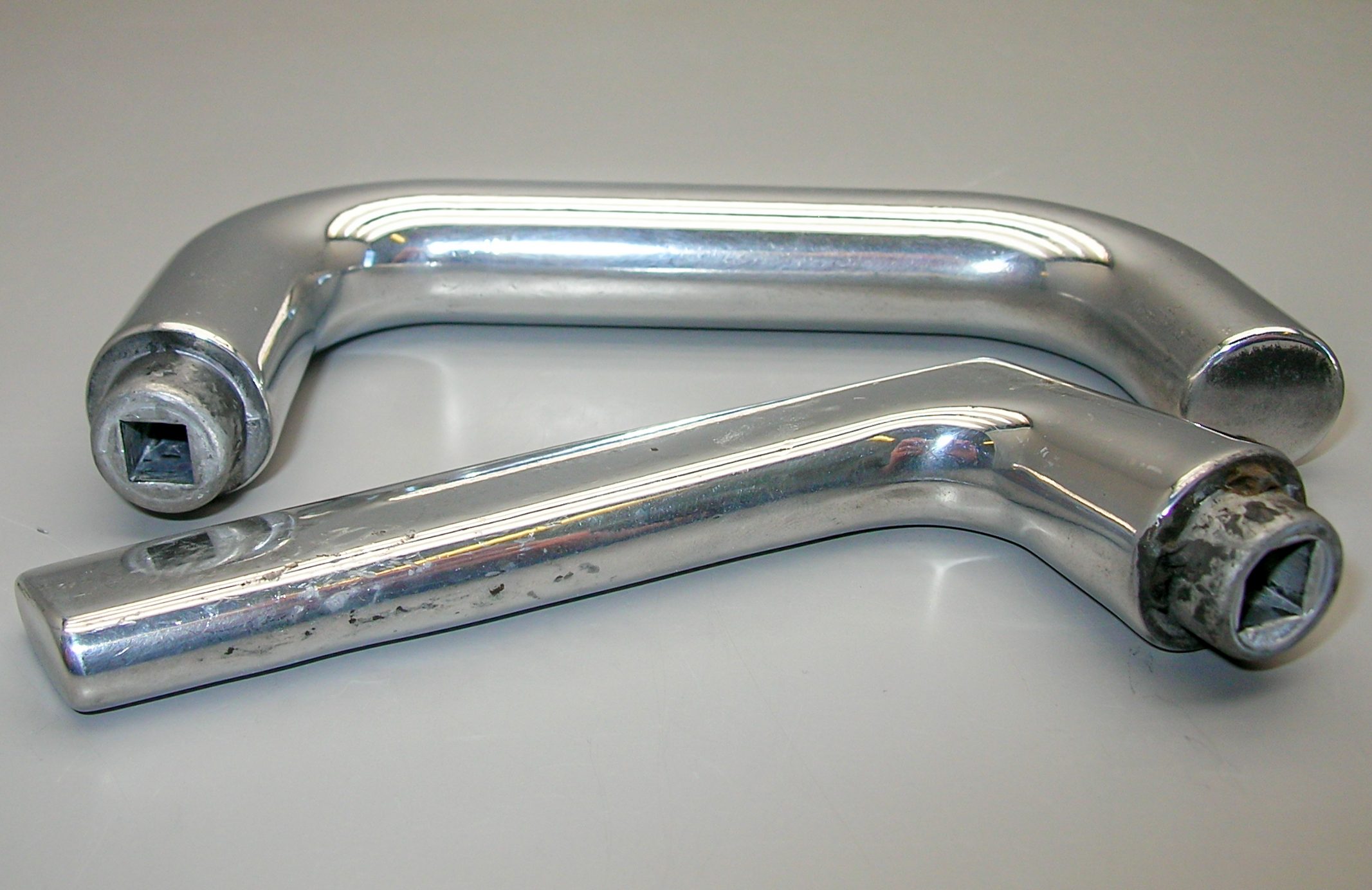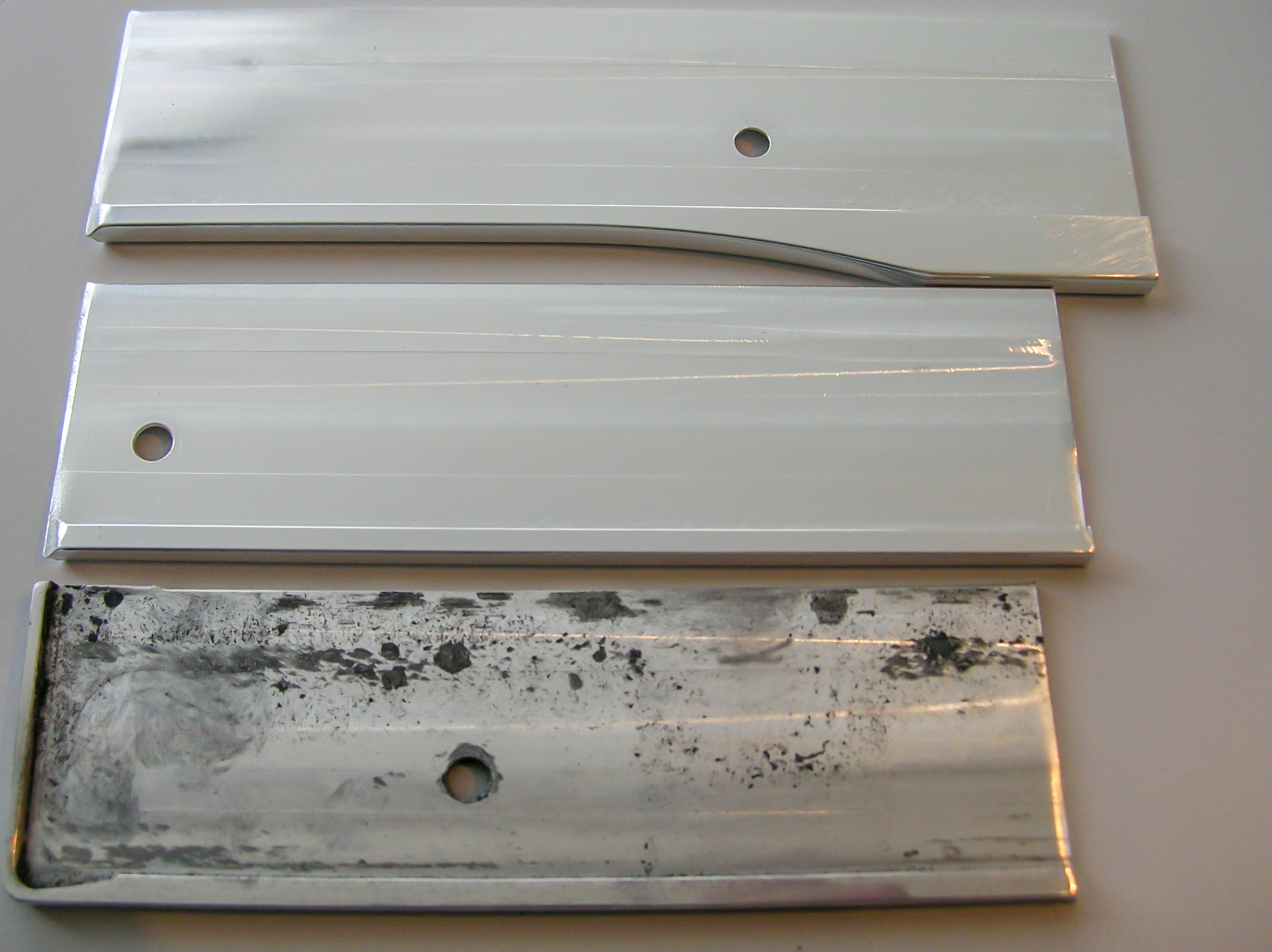For a shiny and brilliant-looking aluminium surface, mechanical polishing of the raw material is often carried out prior to the actual chemical pretreatment process in the anodising plant. This mechanical polishing is then usually done by using special, solid polishing pastes which are applied to the polishing wheel for this purpose. These pastes usually contain greases and waxes as a carrier component, as well as abrasive polishing components.
After mechanical polishing, however, residues of these pastes often remain in the form of black, solid deposits in recesses and in edge areas of the material.

Polishing paste residues on mechanically polished aluminium parts.
In order for the anodised product to look flawless later, these residues must be completely removed. Now the question arises - which cleaner can I use for this?
The cleaner must have the following properties:
Application in a temperature range above the melting point of the carrier substances
Minimal attack on the aluminium base material to avoid loss of gloss
Cleaning at high bath temperatures (e.g. 70 - 75°C) is very advantageous and enables a better and faster infiltration of the residues, so that the carrier substances (and thus the polishing pastes) can be removed more easily. On the other hand, there is an increased risk that the cleaner will remove ("etch") significantly more aluminium due to the high temperature than is the case at around 50 - 60 °C. The increased surface attack of the cleaner is thus more pronounced. Due to the increased surface attack, the surface loses its shine considerably, which is of course undesirable.
If a mild-alkaline standard cleaner is used, the polishing paste residues are often removed at a higher temperature, but it is also possible that the previously painstakingly mechanically produced gloss will be lost again due to stronger surface attack. In combination with a subsequent (electro)chemical polishing process, the gloss effect can be improved again, but the brilliance achieved on the final product is not always sufficient.
For maximum gloss retention and good polishing paste removal, a different approach should be taken and specially formulated cleaning products used. One of these products is Alficlean 150, a liquid and easy-to-dose polishing paste cleaner that is used before (electro) chemical polishing processes. The cleaning time is usually only 3 to 5 minutes at a bath temperature of up to 75°C. Its slight surface attack is compensated for by the subsequent polishing process. Another possibility is offered by the newly developed polishing paste cleaner Alficlean 1165, which is a borate-free product without significant surface attack. The product, which is currently being tested, not only enables polishing paste removal at around 60°C, but also effective removal of native oils and greases.

Gloss retention after cleaning with a suitable polishing paste cleaner
Which of the polishing paste cleaners is best suited for the respective application should be determined in corresponding preliminary tests.
Download the brochure now

Save this article as PDF
This article is also available as a PDF in English. Download now free of charge.
